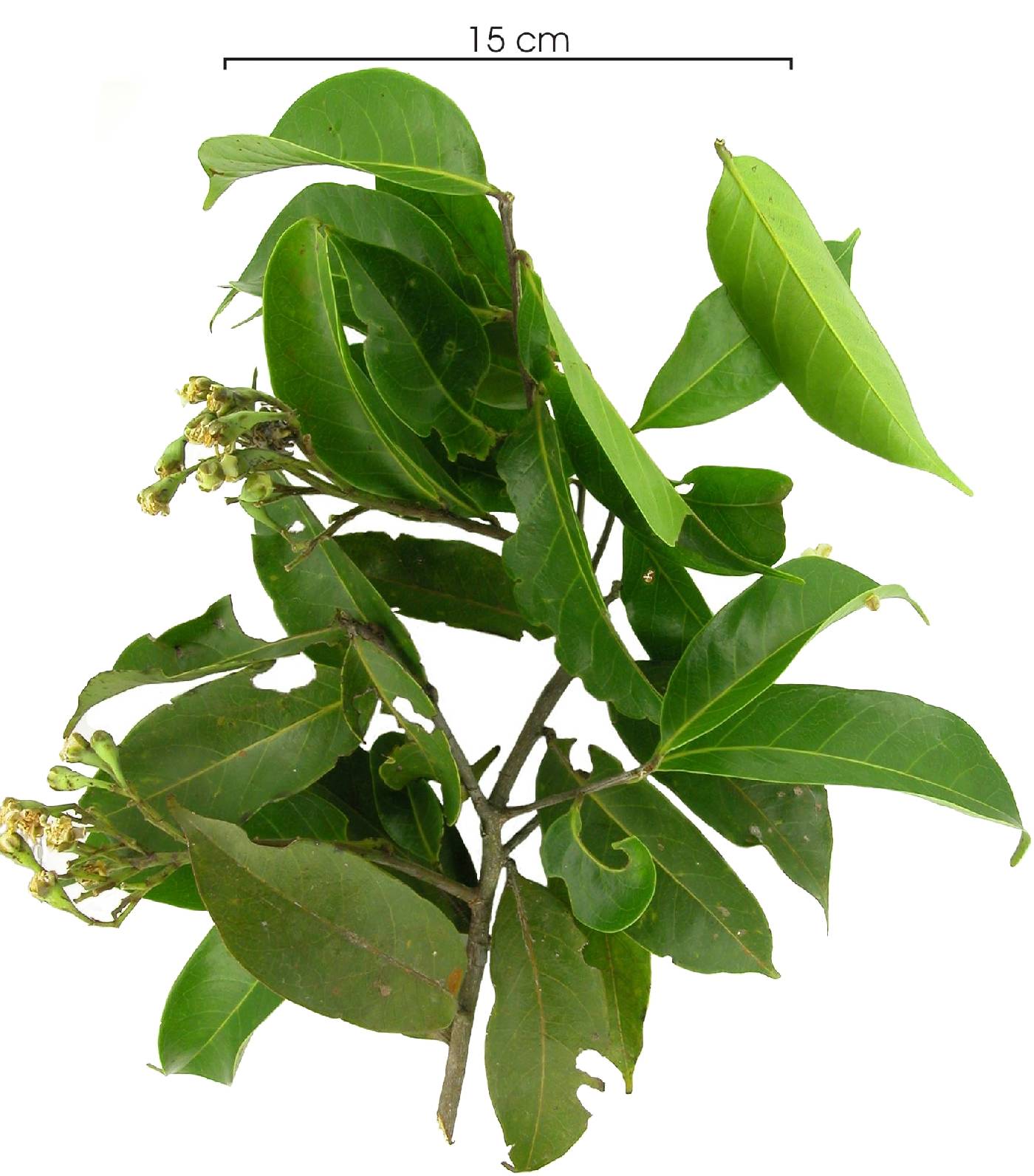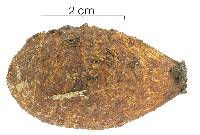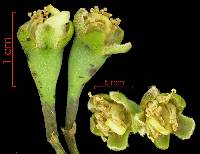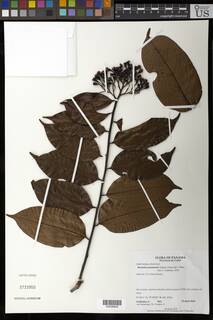

|
|
|
|
Family: Chrysobalanaceae
Corocito, more...palo de gusano
|
Description: A tall forest tree with a straight, cylindrical trunk. Bark is gray; inner bark (visible by slashing only) is dark red. Branchlets are cylindrical, slightly pubescent, with lenticels. Leaves are simple, alternate, without teeth, without pubescence, fairly regularly spaced only branches. At the base of each leaf, where it meets the petiole, there is a pair of small, slightly stalked, glands. Stipules are paired, but readily fall and cannot typically be found. Reproduction: Flowers are greenish-white, in clusters at the ends of branches, produced between March and May. Fruit is an oblong berry maturing from May to August. Distribution: A wet forest species, widespread at Santa Rita and the upper Chagre, but also fairly common at Sherman and the northern part of Soberania. Absent at Barro Colorado Island, but found on peninsulas nearby; absent from Gamboa south. Restricted to mature forest. Similar Species: Not an easy species to recognize. If you notice the glands at the leaf base, these are a good trait. They look like glands in LK crotbi Croton billbergiana LK2 or other Croton, but the latter have heart-shaped leaves that are much different. But you may not look for the glands if you haven't recognized the family, and Chrysobalanaceae is a difficult family. It has irregular or vaguely regular branching that is not distinctive and can easily be confused with Lauraceae or Euphorbiaceae; neither are leaf shape nor arrangement distinctive. The dark red inner bark is a good trait, if you are interested in slashing the trunk, but there are other groups that have reddish inner bark. The family is also known by paired stipules, but except for the genus Hirtella, these fall off readily and can only be found at the end of branches with new leaves. Descripción: Árbol de 10 a 35 m de alto. Copa ligeramente redondeada. Tronco recto y cilíndrico. Corteza exterior gris, internamente es roja. Ramitas terminales cilíndricas y cubiertas de pelos. Hojas simples y alternas, de 10-20 x 4-8 cm, oblongas o elípticas, con ápice acuminado, bordes enteros y base decurrente. Estípulas pares y deciduas, a veces son persistentes en los ápices de las ramitas. Pecíolo de 0.4-0.6 cm de largo y con dos glándulas en el extremo apical. Flores blancas o verdosas. Frutos en drupas, de 4-6 cm de largo, verdes, tornándose amarillentos al madurar. Datos Ecológicos: La especie crece a bajas y medianas elevaciones, en bosques húmedos o muy húmedos. En Panamá se encuentra en las provincias de Colón, Darién, Panamá y la comarca de Guna Yala. Florece y fructifica entre marzo y agosto. Las flores son visitadas por abejas y otros insectos. Las semillas son dispersadas por animales, principalmente murciélagos que se alimentan de los frutos maduros. Especies Parecidas: A menudo se confunde con plantas de la familia Euphorbiaceae, pero las flores y los frutos son muy diferentes. Usos: La madera es empleada en construcciones rurales y para leña. Los árboles de esta especie presentan un gran potencial como planta melífera en fincas dedicadas a la apicultura. |








